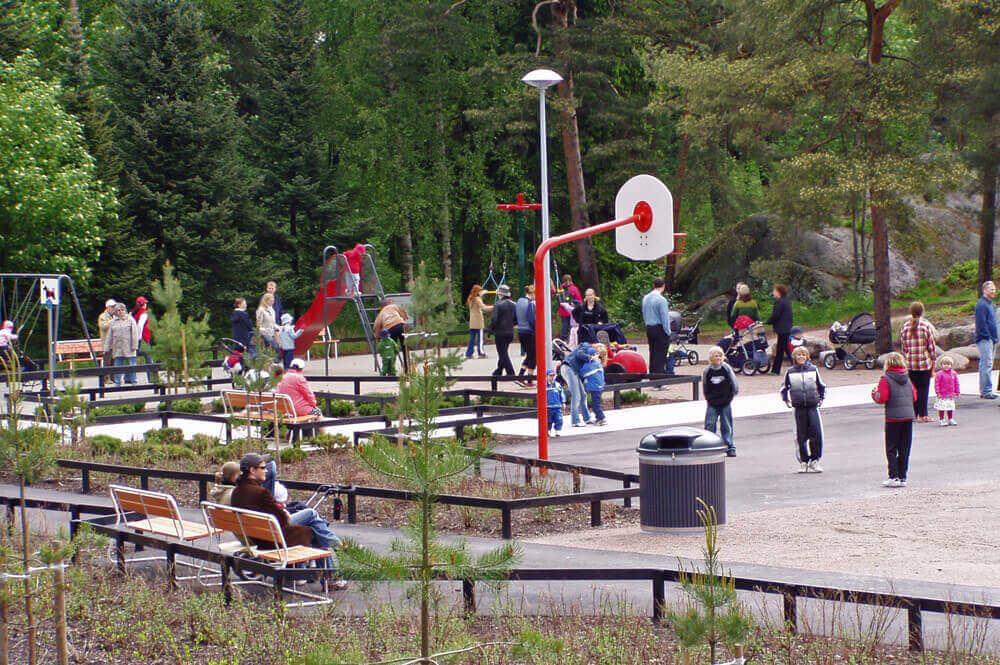Both the developed and undeveloped green areas in Pihlajamäki, including the wide open spaces between the buildings, are linked together, creating excellent outdoor recreational opportunities for residents. The Kiillepuisto and Vuolukivenpuisto parks form one large green area. Built in the mid-1960s, Kiillepuisto is a predominantly natural area characterised by bare rocks and pine trees. A kindergarten is located nearby, so the park is intended in part for use by children.
In 2005 the company Molino Oy designed the renovation of the park in the spirit of the 1960s. A sunny lawn was created around the hexagonal paddling pool in the middle of the park. Unfortunately, since the playground is not yet a supervised play park, the paddling pool has been kept empty.




The area around the paddling pool and the natural rocks were integrated with concrete paving and wooden terraces that were built between the pine trees on the rocks. The playground equipment was renewed and the overgrown bushes cleared. As a result, you can now see all the way to the Sato high-rise buildings that are a landmark in Pihlajamäki. The park is once again very pleasant with the feel of being among the pine trees. It serves as a living room for local residents, and it also hosts the free-of-charge Pihlajamäki Goes Blues festival each summer. This laid-back event attracts around 3000 blues fans to the parks each year.
Vuolukivenpuisto
Kiillepuisto is connected to the adjacent Vuolukivenpuisto, which is also known as Sorsapuisto (“Duck Park”) thanks to its attractive duck pond. Impressive rocks covered with pine trees rise up behind the natural pond, which was once known as Mustasuo (“Black Bog”) and used as a drinking hole for Russian horses when Pihlajamäki (then known as Aarnikanmäki) was fortified in 1918. Many Ice Age boulders originating from the Viipuri region can be found in Vuolukivenpuisto and other parts of Pihlajamäki.


The park area consists mainly of trees and is therefore maintained as a forest. However, there are park benches and picnic tables along the lighted paths. New park furniture has been introduced in Vuolukivenpuisto especially for hikers and visitors who like to sit and watch the ducks.
Pihlajamäki has an active residents’ association, and the local Park Pals help keep the green areas tidy.


